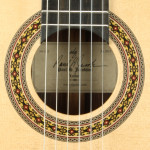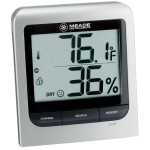Humidipak is a humidity control product for guitarists that I was first made aware of several months ago when I was communicating with the owner of one of my guitars about a crack that had appeared in the soundboard.
The Humidipak concept is attractive: its approach to humidity management is based on packets of water-absorptive material that emit humidity if the ambient humidity drops below 45% and absorb humidity when ambient humidity exceeds 55%. The product, in other words, provides two-way humidity control. The seller offers detailed information on the product’s proper use. There are even instructions, and optional available startup packets if a guitarist believes a guitar or its case may be suffering from excessive dryness.
Surely Humidipak is the ideal humidity management solution for any and all humidity conditions. Hmm, not quite, say I. Let me present you with my own customer’s situation.
Her dwelling is an apartment in a major U.S. northeastern city. It is heated by steam radiators like so many residences in such cities. This kind of heating does not provide a way to install a furnace-mounted humidifier since there is no furnace. Her cherished guitar was perfectly safe with Humidipaks installed…until frigid winter came. Then the relative humidity of the ambient air plummeted, overwhelming the Humidipak system. Along came the crack in the soundboard.
To be fair to Humidipak, I commend the product as a supplementary resource for humidity control, as a way to fine tune the humidity in your guitar’s environment. ..if you think your guitar needs such fine tuning to sound it’s best. That’s a matter of personal taste. Such fine tuning is not necessary, however, to keep your guitar safe from humidity-caused damage. If you maintain relative humidity (RH ) between 35% and 70%, it should be damage-proof as long as it was assembled in a humidity environment of 40%-50%. (I always tried to keep my own workshop between 42%-47% especially while assembling a new guitar.)
However, when relative humidity is extremely low, there is simply no substitute for a single-space or whole-house humidifier; your guitar could been in physical danger if RH drops below 25%, not at all uncommon in mid-winter. But a typical humidifier may not be able to raise indoor relative humidity above 35% or sometimes even 30%. While that may be sufficient for human physical health, it may not be optimal for a valuable guitar. That’s where Humidipak can be helpful to get the guitar’s in-case environment closer to 45%-55%. If you’re in the middle of a frigid winter, be prepared for frequent packet replacements…at $4 apiece.
Very high humidity is not so often a problem. If you’re sufficiently affluent to own a guitar that’s worth a Humidipak level of treatment, you probably also dwell in an air conditioned residence. Air conditioning alone will likely reduce indoor RH to 50%-60%, so you shouldn’t need a dehumidifier to keep your guitar safe. To maintain the <55% promised by Humidipak, you will have to change packets. There’s no way to determine if a packet change is needed by the feel of the packet, as with low RH conditions; you’ll have to go by an extended >55% reading from an in-case hygrometer. If a Humidipak will not produce <55%, it may be time to complement it with a single-space or whole-house dehumidifier.
For more information on humidity control for your guitar, I recommend you read Humidity & Your Guitar’s Health. You can also get more complete information on Humidipak at Boveda 2-Way Humidity Control.



